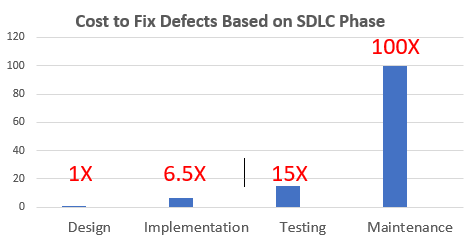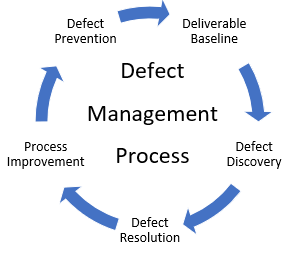Avoid Costly Mistakes: The Crucial Role of Defect Management Process in Software Development
The Defect Management Process is a vital component of software development as it enables continuous monitoring of product quality throughout the software development lifecycle. It provides information that helps to improve the development process and ensures the final product meets quality standards.
According to the IBM Systems Sciences Institute, the cost of fixing software defects can be up to 100 times more expensive, depending on when they are discovered during the SDLC. This highlights the importance of identifying and addressing defects as early as possible to prevent them from escalating into more significant and costly issues.
Having a well-defined defect management process in place allows development teams to identify and track defects, prioritize them based on their impact, and assign them to the relevant team members for resolution. This process also helps to prevent defects from recurring in future releases and ensures that the product meets the desired quality standards.
Defect management is not only essential to ensure a high-quality product but also helps to save time and costs associated with fixing defects. Therefore, it is imperative to incorporate a robust defect management process in the software development lifecycle.

Early defect detection and effective testing processes can significantly reduce the costs and risks associated with software defects
Over one-third of the expenses related to software defects can be minimized by improving software testing processes and incorporating tools that facilitate early defect detection in the software development lifecycle. Defect tracking software is a key tool used for tracking defects throughout the SDLC process, enabling development teams to identify and prioritize defects and assign them to the appropriate team members for resolution. Additionally, implementing automated testing processes can help identify and address defects earlier in the development process, reducing the likelihood of defects escalating into more significant and costly issues. By prioritizing early defect detection, organizations can improve the overall quality of their software and enhance customer satisfaction while minimizing the risks associated with product recalls or loss of revenue.
The Importance of Defect Management in Software Development
List of Benefits:- Defect Prevention: By implementing defect management processes, the occurrence of defects can be reduced, thereby preventing potential issues before they arise.
- Minimization of Impact: When defects do occur, a good defect management strategy can help to minimize their impact by identifying and addressing them early on in the development cycle.
- Efficient Defect Resolution: With a well-defined defect management process in place, defects can be resolved quickly and efficiently, resulting in faster development cycles and improved product quality.
- Process Improvement: Defect management provides valuable insights into the overall software development process, which can be used to identify areas for improvement and to implement best practices that enhance quality and reduce defects over time.

